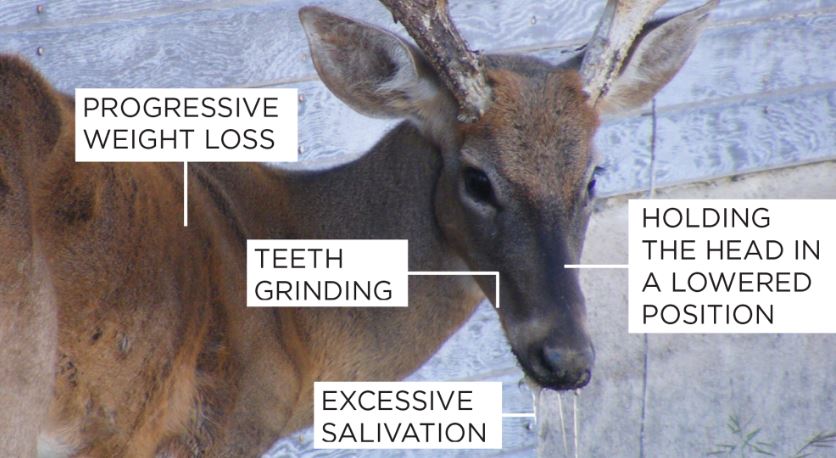Chronic Wasting Disease in Texas
Chronic Wasting Disease (CWD) was found in Texas in 2012 and has been spreading within the state since that time. CWD is a neurological disease in deer, elk, moose and other members of the deer family, known as “cervids.” The disease was first recognized in 1967 in captive mule deer in Colorado, and has since been documented in captive and free-ranging deer in 21 states and two Canadian Provinces.
This disease presents numerous challenges for state wildlife agencies across North America. Of concern is the potential for decline within deer, elk, or other susceptible cervid populations. In addition, CWD could have indirect impacts on hunting, hunter participation, and economic benefits derived from big game hunting. In Texas, hunting is a $2.2 billon economic engine, supporting many rural towns across the state. CWD is a threat to landowners, hunters, and wildlife conservation.

CWD Updates: CWD in Texas
- CWD Found in Kaufman County – Nov. 2022
- CWD Detected in Limestone County – Sept. 2022
- CWD Found in Gillespie County – Sept. 2022
- CWD Detected in Hunt County – March 2021
- CWD Testing Required for Susceptible Exotics – Oct. 2019
- CWD Found in Texas Panhandle – Sept. 2016
- 13 New Cases of CWD Confirmed in Texas – July 2016
- CWD Found in More White-tailed Deer – August 2015
- CWD Testing of Mule Deer in Texas – Nov. 2012
- CWD Check Stations in West Texas – Nov. 2012
- CWD Found in West Texas Deer – July 2012
- Chronic Wasting Disease in Texas
Managing CWD in Texas
Because eradication is thought to be impossible once CWD becomes established in a population, it is imperative that a sound CWD management program is established to reduce the severity of implications resulting from the disease. Of course, disease prevention is the best approach to protect cervid populations and prevent social and economic repercussions.
Texas Parks and Wildlife Department (TPWD) and Texas Animal Health Commission (TAHC) have developed a cooperative CWD management plan to guide both agencies in addressing risks, developing management strategies, and protecting big game resources from Chronic Wasting Disease (CWD) in captive or free-ranging cervid populations.
CWD is devastating. Thanks to you for the information you have provided. So sad what CWD has done to the deer population in some areas. I am so glad that Texas A&M is doing work in this area.